Inflammation is part of the body’s defense system, a natural response to infection or injury. When the immune system is activated, inflammatory cells are sent to the affected area to attack unwanted invaders, such as bacteria or viruses, and heal the damaged tissue. Each kind of inflammatory cell has a specific role in the immune response.
If your body mounts an inflammatory response when you are neither sick nor injured, you may be suffering from chronic inflammation. Chronic inflammatory diseases, such as cystitis (inflammation of the bladder), arthritis (inflammation of the joints), and dermatitis (inflammation of the skin), if left untreated, can last for many years. Use acupressure for inflammation as part of a holistic preventative treatment to help stave off such illnesses, balance the body’s energy channels and prevent systemic inflammation.
Does Acupressure Help Inflammation?

In recent years, Traditional Chinese Medicine (TCM) techniques, such as acupuncture and acupressure, have become increasingly adopted as treatments for inflammation. Acupressure works best as preventative medicine, correcting imbalances in the body before more serious medical conditions arise.
Each acupoint communicates with a specific internal organ, and acupuncture needles, electrical stimulation, or massage at the relevant acupressure points for inflammation have been shown in clinical trials to have potent anti-inflammatory effects.
A 2017 study published in Nature demonstrated that the acupressure points to reduce inflammation strongly correlate with neurogenic spots induced by inflammation in the dermatome. The researchers found that stimulation of neurogenic spots, 70% of which coincided with known acupoints, alleviated pathological conditions such as colitis (inflammation of the colon) in rats. Importantly, stimulation of nearby sites (3-5mm away from the acupressure points for inflammation) did not produce the same effect.
In 2020, neuroscientists at the Harvard Medical School were able to trigger both proinflammatory and anti-inflammatory responses in mice using electrical stimulation at acupressure points to reduce inflammation. The researchers demonstrated that acupuncture influenced how the animals responded to the “cytokine storm,” the rapid release of proinflammatory cytokines.
Investigator Qiufu Ma, the professor of neurobiology who led the research, was inspired by a previous study in 2014 that demonstrated how electrical stimulation of the vagal-adrenal axis reduces systematic inflammation in mice, along with another previous study in 2016 that showed how stimulation of the vagal-adrenal axis slowed the activity of proinflammatory cytokines and reduced symptoms of rheumatoid arthritis.
Ma and his team applied low-intensity electro-acupuncture to specific points on the hind legs of mice. This stimulation activated the vagal-adrenal axis and induced the secretion of dopamine. Mice treated in this way had lower levels of proinflammatory cytokines and far greater survival outcomes. The researchers discovered that the vagal-adrenal axis was activated only by stimulation of the specific acupoints, demonstrating the importance of selecting the correct acupressure points to relieve inflammation.
What Are The Acupressure Points For Inflammation?
Acupoint: LI-11 (Other Names: Large Intestine-11/Qu Chi/Pool at the Crook)
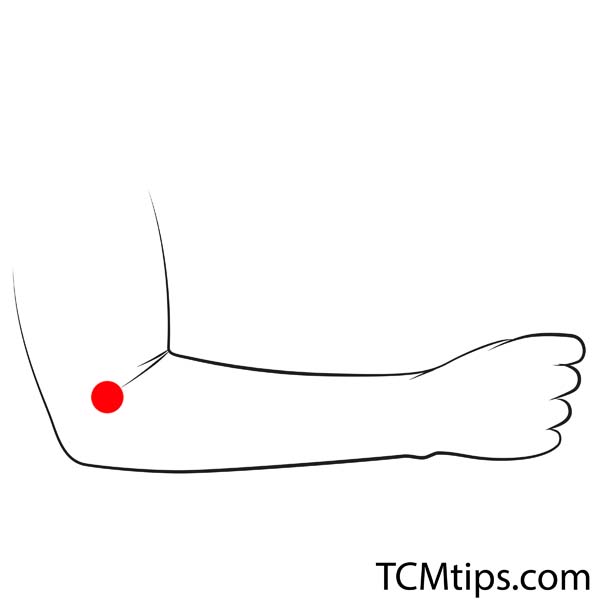
This acupoint on the large intestine meridian removes heat from the body, expels wind, and reduces inflammation. Stimulation of LI-11 is used to alleviate abdominal pain and acute gastroenteritis, which is why the Qu Chi is commonly employed in acupressure for bowel inflammation.
The large intestine meridian begins at the index finger and travels up the arm and shoulder, along the neck, and onto the face. LI-11 is located on the elbow, on the lateral end of the transverse cubital crease. To find it, flex your arm, then look for the crease on the outside of your elbow.
Acupoint: LI-15 (Other Names: Large Intestine-15/Jian Yu/Shoulder Bone)
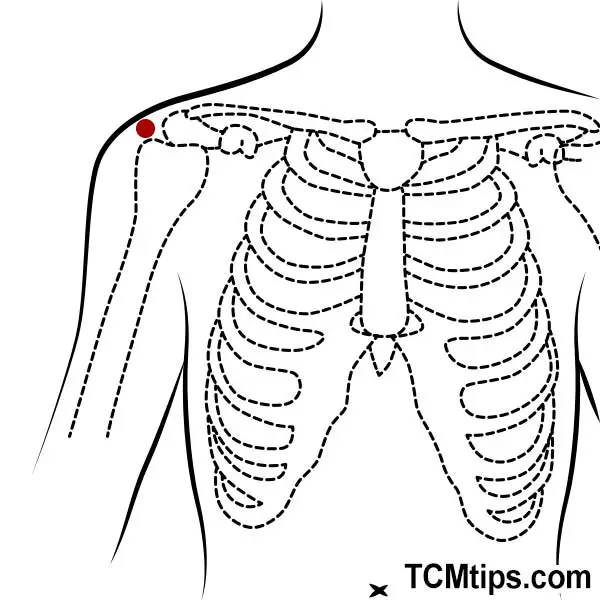
LI-15 is another useful acupoint on the large intestine meridian used in acupressure for inflammation. Known as the Jian Yu (“Shoulder Bone”), LI-15 is located on the deltoid muscle of the shoulder. Stimulation here expels dampness and wind, relieves shoulder and neck pain, and is used to treat conditions such as paralysis or motor impairment.
The Jian Yu is also used in the treatment of skin conditions and allergies, making it one of the most potent acupressure points for skin inflammation.
Acupoint: LI-4 (Other Names: Large Intestine-4/He Gu/Joining Valley)
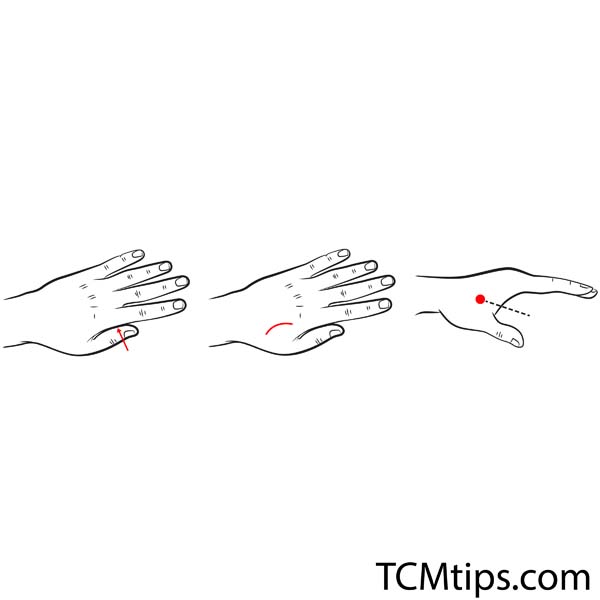
Many of the important acupressure points for inflammation are located on the large intestine meridian. The He Gu or “Joining Valley” is found between the thumb and index fingers, deep within the tissues.
Regarded as a great mediator of pain, LI-4 is commonly used in acupressure for autoimmune inflammation. Apply strong pressure for five seconds, then release for a few seconds. Repeat approximately ten times on both the left and right sides.
Acupoint: Bl-23 (Other Names: Urinary Bladder-23/Shen Shu/Kidney Transporter)
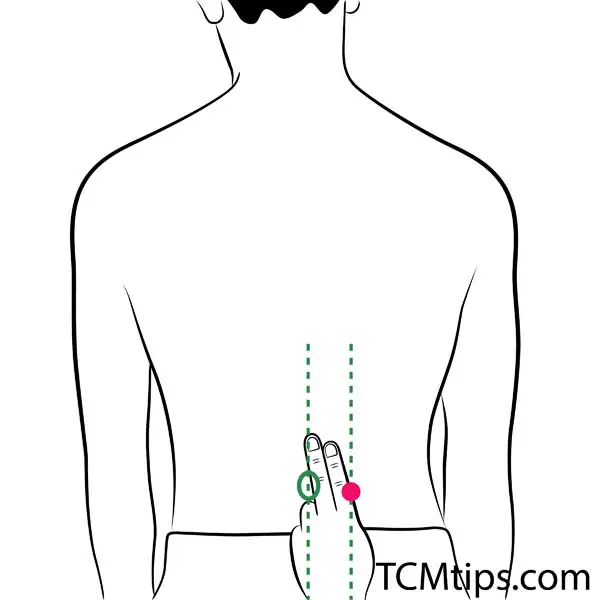
Though belonging to the bladder meridian, the Shen Shu acupoints are excellent for relieving chronic low-back pain and are traditionally used in acupressure for back inflammation. You can find the acupoints two finger-widths out from either side of the spine, as measured from a space between the second and third lumbar vertebrae.
Activate the Shen Shu by applying gentle pressure with the thumb or middle finger. As well as being a great mediator of pain, this acupressure point helps to balance kidney function.
Acupoint: GV-20 (Other Names: The Governing Vessel-20/Bai Hui/Hundred Convergence)
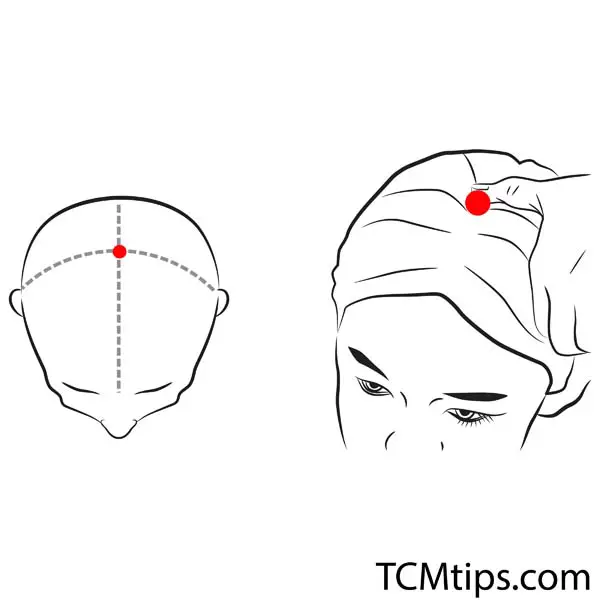
The GV-20 acupoint is located on the top of the head. You can find it by drawing an imaginary line up from the ears to the sagittal suture.
Stimulation of GV-20 clears the mind, providing relief from headaches and dizziness, and anxiety. Also used in the treatment of strokes, GV-20 is traditionally employed in acupressure for brain inflammation.
Acupoint: LI-20 (Other Names: Large Intestine-20/Ying Xiang/Welcome Fragrance)
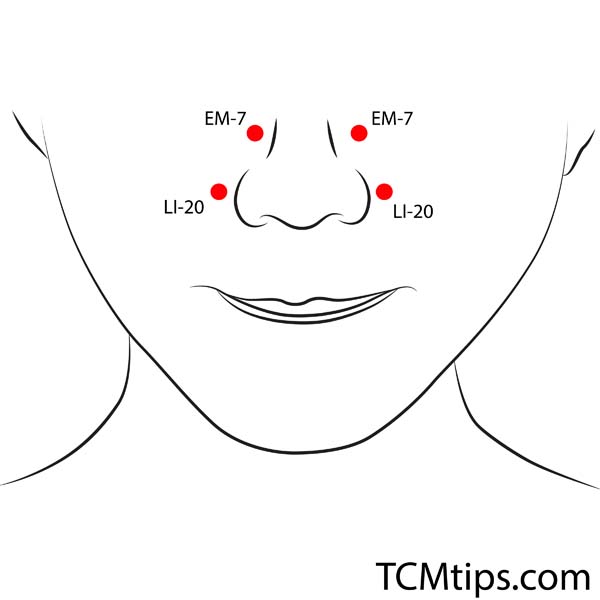
Located in the nasolabial groove, at the point where the nose meets the cheeks, LI-20 is an essential acupoint for acupressure for sinus inflammation. The Ying Xiang, as it’s known in Chinese, is also used to tighten the skin and calm the muscles of the face.
Using both forefingers, apply gentle pressure for up to a minute at a time.
Acupoint: KI-3 (Other Names: Kidney-3/Tai Xi/Supreme Stream)
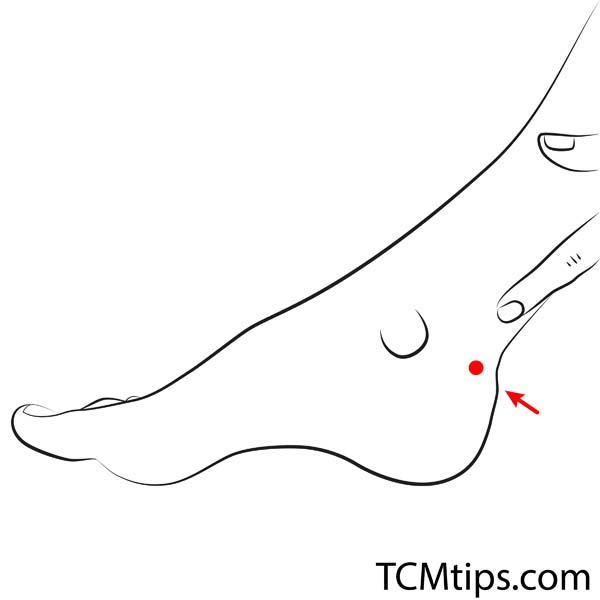
The Tai Xi is a useful kidney meridian point used in acupressure for inflammation. It is located in the depression between the Achilles tendon and the ankle.
How does acupressure help inflammation of the feet? Stimulating the KI-3 acupoint strengthens the legs and improves circulation, and is helpful both for control of pain and reducing swelling in the feet.
After warming your feet in a relaxing bath, activate the Tai Xi by applying firm pressure with your thumb.
Acupoint: ST-34 (Other Names: Stomach-34/Liang Qiu/Ridge Mound)
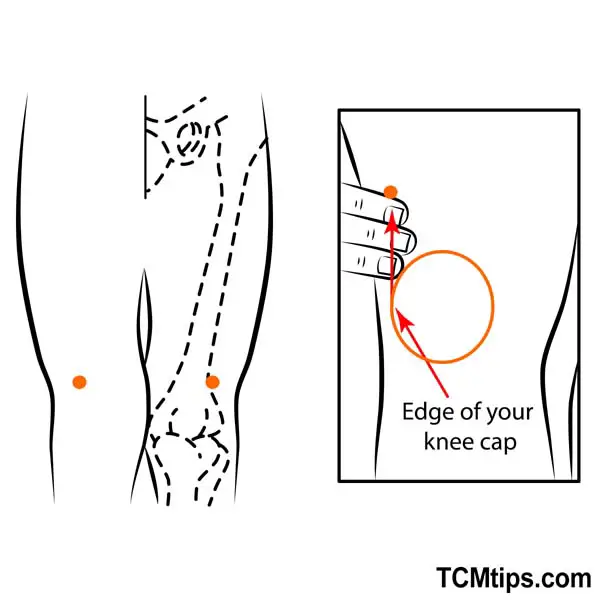
ST-34 is effective in the control of pain relating to abdominal or gastric conditions and is one of the primary acupressure points for gallbladder inflammation. You can find the Liang Qiu, or “Ridge Mound,” on the front of the legs, around three finger-widths above the knee caps.
Sit in a comfortable position and wrap your hands around your leg, breathing deeply as you press firmly on the acupoint.
Acupoint: LI-1 (Other Names: Large Intestine-1/Shang Yang/Metal Yang)
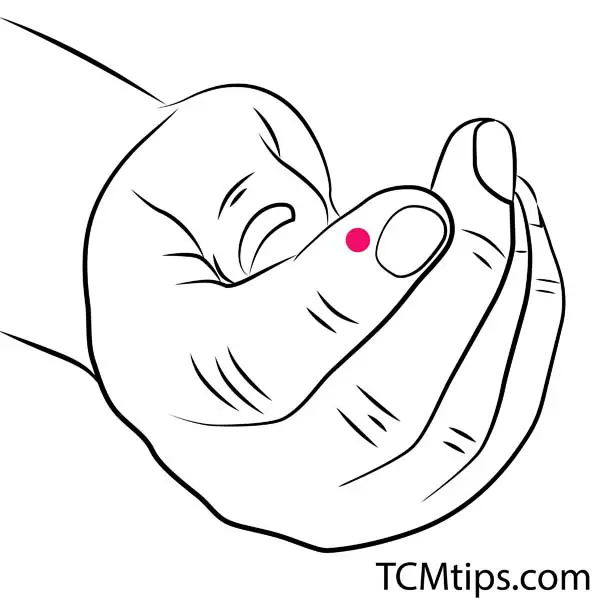
The last of the large intestine meridian acupoints used in acupressure for inflammation is the Shang Yang, located on the radial end of the index finger, around 0.1 cun behind the corner of the nail.

Stimulation here reduces fever and swelling and alleviates the symptoms of a sore throat. Activating the LI-1 helps in the control of pain relating to gum swelling and toothache, making the Shang Yang an essential acupoint in acupressure for inflammation toothache.
To massage the acupoint, press and rub the index fingernail between the thumb and index finger of the opposite hand.
Acupoint: Bl-40 (Other Names: Urinary Bladder-40/Wei Zhong/Middle of the Crook)
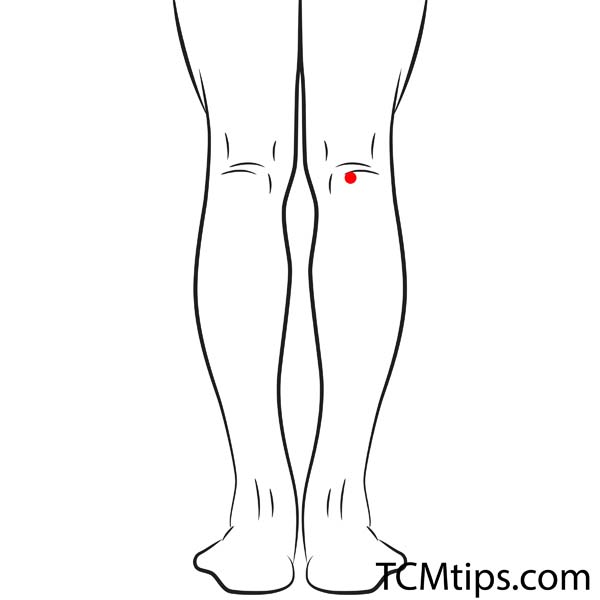
Activating the Wei Zhong clears heat from the body and improves blood flow, making it one of the useful acupressure points to relieve inflammation.
You can find Bl-40 in the middle of the crease that forms at the back of the knees when you bend your legs. Acupressure at the Wei Zhong is very effective in the treatment of chronic low-back pain and knee pain, making it an essential acupoint among those using acupressure for knee inflammation.
With the knee bent, use the thumb to apply pressure.
Acupoint: Ren-12 (Other Names: The Conception Vessel-12/Zhong Wan/Middle Epigastrium)
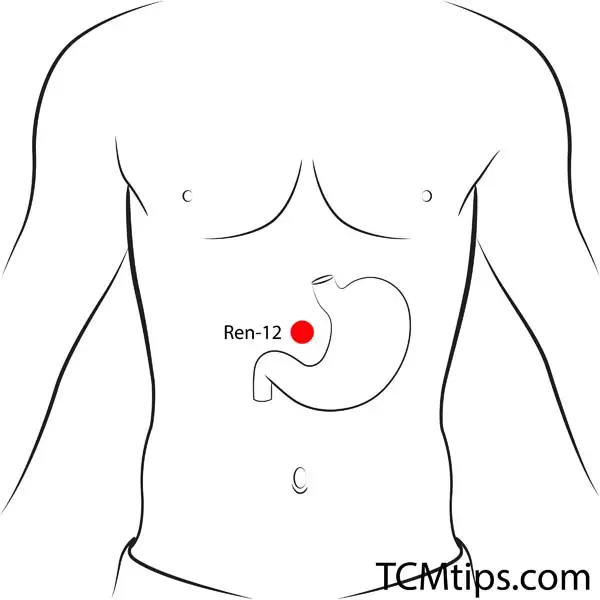
Ren-12, known as the Zhong Wan, is located on the Conception Vessel, four finger-widths up from the navel.
Stimulation of the Zhong Wan enhances the functioning of the internal organs and harmonizes the stomach and the spleen. As well as being among the primary acupressure points for stomach inflammation, the Ren-12 acupoint is effective in treating dyspepsia and acid regurgitation.
In a 2005 study, scientists were able to prevent gastric lesions in rats using moxibustion treatments at Ren-12, among other acupoints. Treatments at non-relevant acupoints showed no effect.
Acupoint: SP-6 (Other Names: Spleen-6/San Yin Jiao/Three Yin Intersection)
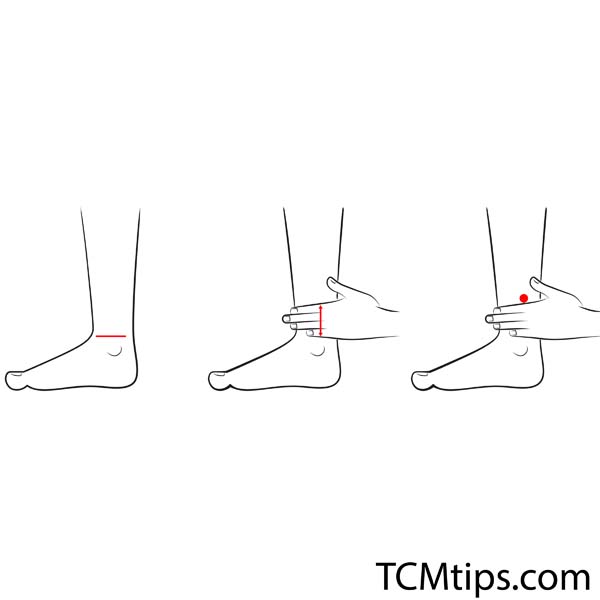
The SP-6 acupoint occupies an important location at the junction of the spleen, kidney, and liver meridians, and is used to treat medical conditions related to all three organs. Stimulation here strengthens the spleen and the stomach, nourishes the blood, and restores balance to the liver and kidneys. Accordingly, the San Yin Jiao is considered one of the essential acupressure points for spleen inflammation.
You can find SP-6 on the lower legs, around four finger-widths up from the tip of the shin bone. Look for a tender area as you slide your finger from the edge of the tibia towards the inside of the leg.
Acupoint: Ren-22 (Other Names: The Conception Vessel-22/Tian Tu/Heaven Projection)
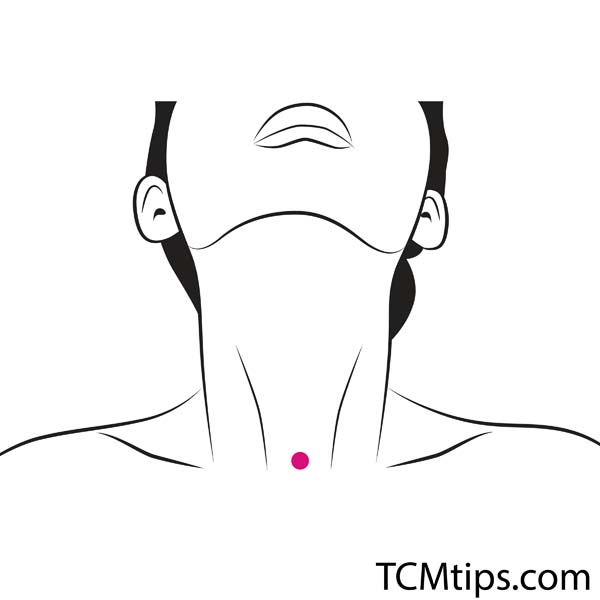
If you suffer from asthma, you’ll know that inflammation of the airways makes them more sensitive to some of the triggers that cause asthma attacks. Stimulating the Ren-22 acupoint reduces mucus in the throat and sinus, and alleviates symptoms of coughing or swelling in the throat, making it one of the primary acupressure points for throat inflammation.
You can find the Tian Tu on the anterior median line of the neck, in the depression at the center of the suprasternal fossa.
Acupoint: ST-1 (Other Names: Stomach-1/Cheng Qi/Tears Container)
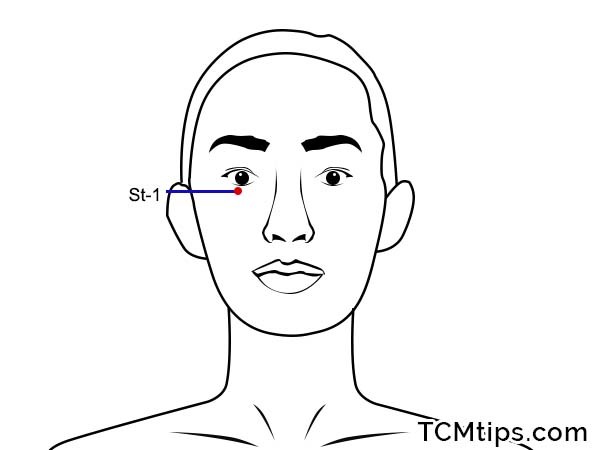
ST-1, known as the “Tears Container,” is located around half a centimeter under the eye, and is regarded as an essential acupressure point for under-eye inflammation. Massaging this acupoint helps to reduce redness and swelling around the eyes.
Take care when applying pressure here, as the skin below the eye is very sensitive.

Try our Anti-Aging Gua Sha Tool designed to bring out your skin’s natural glow.
Best Gua Sha Product- Anti-Aging: The tool is designed to target 11 specific aging signs such as wrinkles and sagging skin. By following the 7-step routine, users can improve skin firmness and reduce fine lines naturally.
- Enhances Skincare Routine: It works effectively with serums and lotions, boosting absorption and efficacy of skincare products.
- Visible Skin Improvement: Users can expect a smoother complexion, reduced puffiness, and a more youthful appearance.
 P. Sze
P. Sze 















